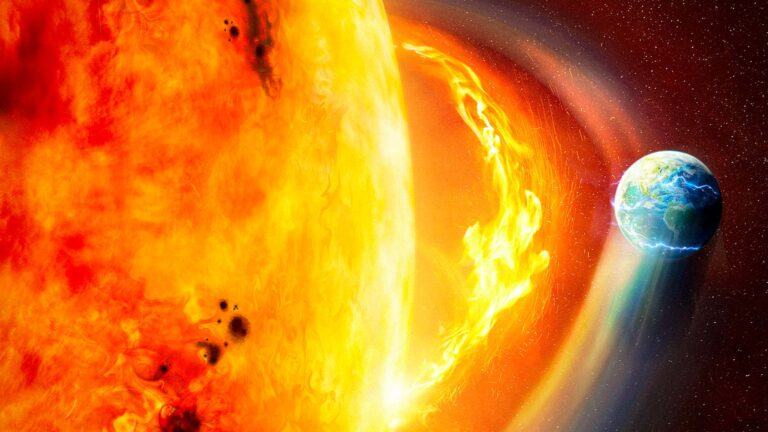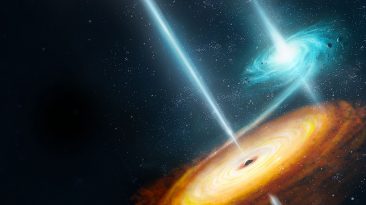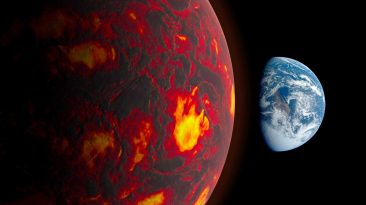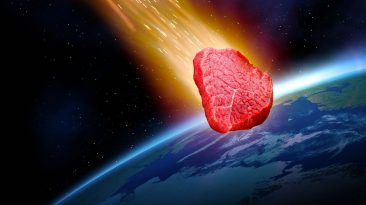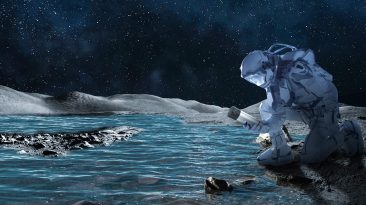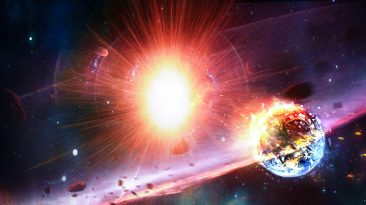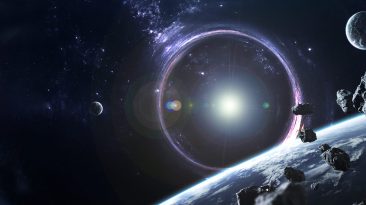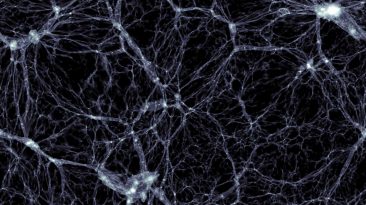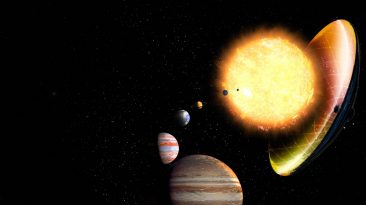Every year, our planet makes one full trip around the Sun. And while that means we’re already moving at breakneck speeds, we’re about to ramp that speed up. Like, way up! Let’s turn Earth into a planet-sized spaceship and crank it up to light speed. Why would this make Earth extremely heavy? What would happen to Earth if it started orbiting so fast? And what would it be like to experience this all from down on the ground?
Nothing travels faster than light. Brace yourself because light moves through space at a blistering 300,000 km/s (186,000 mi/s). That means from the moment a particle of light leaves the Sun, hurtling directly toward you on Earth, it takes just eight minutes before it hits you in the face – or gently caresses your face. Yeah, it only takes light eight minutes to travel 150 million km (93 million mi). And light reflecting off the Moon only needs one second to reach your eyes. When it comes to an object cranking up to the speed of light, things aren’t as simple as just picking up the pace. Let’s take our planet. As it gets closer to the speed of light, its mass increases until it becomes infinite. And to move an infinitely massive object, you’re going to need an infinite amount of energy. And that’s just impossible. Until now.
Let’s start slow. Earth already orbits the Sun at 30 km/s (19 mi/s). Well, that’s not slow at all. Compare it to the speed of light, and that’s not even a drop in the bucket. If you want to be more precise, Earth orbits this big scorching ball at only 0.01% of the speed of light. So we’ve got a lot of ground to cover here. But don’t get ahead of yourself. Because even if we just increased Earth’s orbital velocity to 42 km/s (26 mi/s), we’d be in serious danger. All because at this speed, Earth would achieve its orbital escape velocity. And that means that it would be traveling fast enough to escape the Sun’s gravitational pull. We’d just be traveling out into space. Another cold, rogue planet with no star system to call home.
Of course, we’d cross the Solar System before being ejected out of it for good. After about three years of moving at this speed, Earth would reach Neptune. At that point, we’d have already passed the other planets of the outer Solar System. If we got really unlucky, Earth might crash into the big ball of gas, Jupiter, along the way. For a moment, that would be a pretty view as we approached. What a shame it wouldn’t last long enough for you to enjoy. Because Earth colliding with Jupiter would have some lethal side effects.
We wouldn’t let your epic journey end so abruptly though. In this scenario, Earth would keep hurtling through the Solar System and beyond. We’d keep hurtling further and further out of our planetary hometown and into the big unknown. Without the Sun’s heat, Earth would slowly but surely become a cold and lifeless rock. Okay, that didn’t go as planned at all. So how about we start over? Let’s break the laws of physics and keep our planet in the Sun’s orbit as it reaches light speed. What would that be like?
To accelerate the entire planet to such an incredible speed, we’d need a lot of energy. How much? More than you could imagine. Even if you wanted to accelerate yourself to only about 90% the speed of light, you’d need as much energy as the entire world consumes in five days. So where in the Universe would we manage to get enough energy to speed the whole planet up? Your best bet would be to follow the lead of a very rare but extremely fast kind of star. A hypervelocity star. These are stars that can reach speeds of up to 33% the speed of light. There may be as few as 1,000 of these kinds of stars in our entire galaxy. All because they need a unique chain of events to unfold first.
Hypervelocity stars reach their hyper-speeds by orbiting a black hole that’s colliding with another black hole. These two black holes begin a kind of dance with each other, spinning faster and faster. Until eventually, they let go. And that gravitational disruption leads to the stars being ejected across the Universe at these insane speeds. So it’s simple. In order for us to reach the speed of light, we’d just need to swing around a black hole or two. What’s the worst that could happen there?
Experiencing light speed on Earth wouldn’t be exactly like what you see in the movies when the Millennium Falcon or the USS Enterprise engage thrusters. For starters, you wouldn’t see any more stars in the night sky. That’s because you’d be experiencing what’s known as the Doppler effect. In scientific terms, all the light traveling toward Earth would now have a higher frequency, moving from the visible spectrum into the X-ray range. To put it simply, the light from the stars would become invisible to you, because the human eye can’t see X-rays. And it could mean invisible danger for you. X-rays could cause many health problems and increase your risk of cancer.
While today’s atmosphere is thick enough to prevent most of this radiation from stars reaching us, traveling at the speed of light might put our atmosphere to the test. Yeah, we could lose our protective air shield. Which also means, on this Earth, you wouldn’t be able to breathe. Even if our atmosphere somehow stayed in place, traveling at light speed would quickly damage it. Even something as small as a hydrogen molecule would become an incredible hazard. Slamming into our atmosphere at such high velocities, it could cook it into oblivion.
Sources
Sources
- What Would Happen If You Traveled At The Speed Of Light? 2023. Science ABC
- Will the Voyager satellites ever return to Earth? 2019. Astronomy.com.
- This is what it would really look like to travel at near-lightspeed. 2013. Gizmodo.
- The Electromagnetic Spectrum – X-Rays. 2004. Nasa.
- Here’s What Actually Happens When You Travel at the Speed of Light, According to NASA. 2022. Travel + Leisure.


